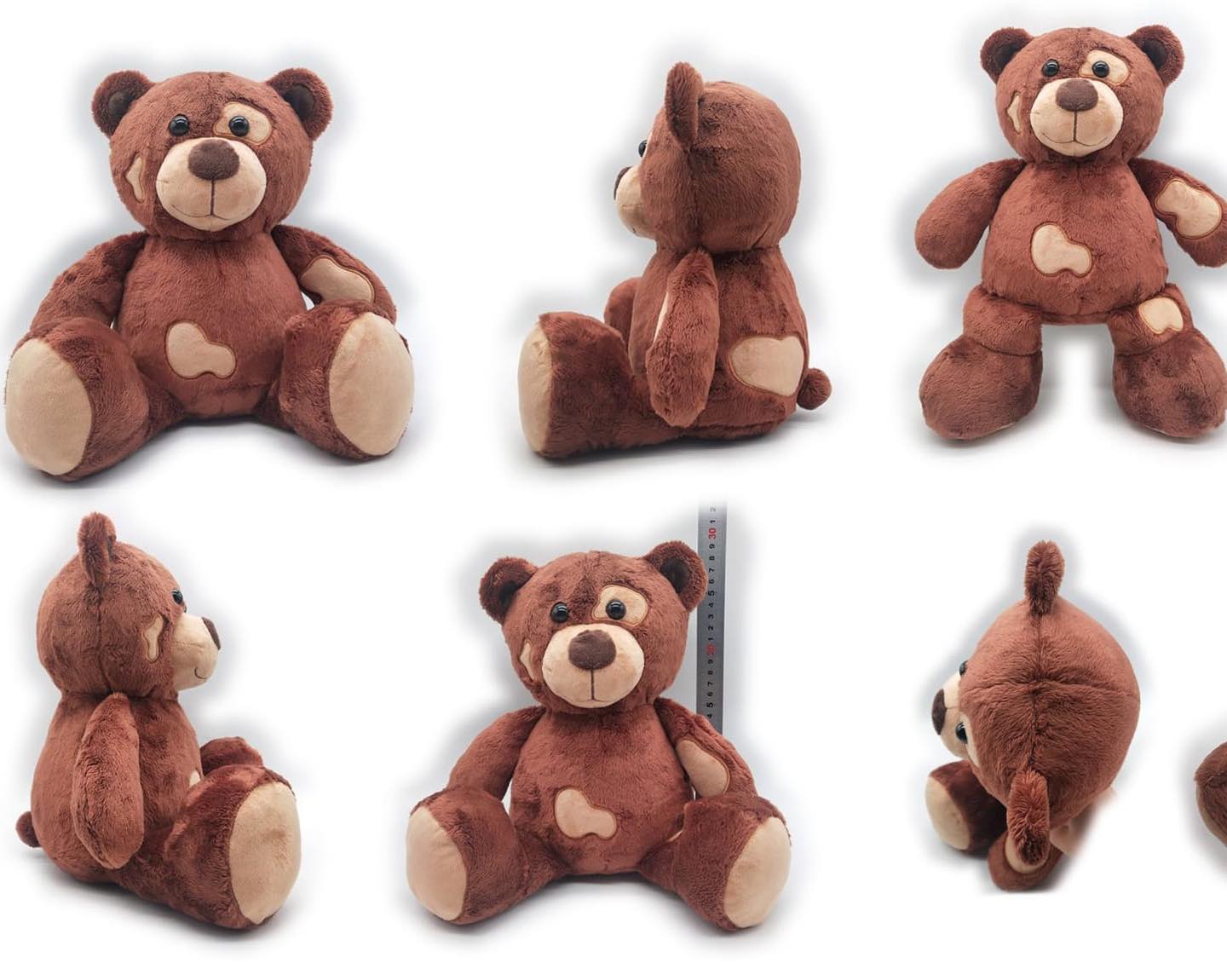
Department of Dermatology, University of
Health Sciences, Sultan Abdulhamid Han
Training and Research Hospital, Istanbul,
Turkey
Correspondence
Sevil Savaş Erdoğan, Department of
Dermatology, Sultan Abdulhamid Han Training and Research Hospital, Tıbbiye Street., 34668, Usküdar, Istanbul, Turkey. Email: doktorsevilsavas@gmail.com
2232 | © 2020 Wiley Periodicals LLC wileyonlinelibrary.com/journal/jocd J Cosmet Dermatol. 2021;20:2232–2239.
1 | INTRODUCTION
Anxiety and depressive disorders are the most common psychopathologies in children and adolescents.1 Alopecia areata (AA) is a common hair disorder characterized by a sudden-onset non-cicatricial but has a great negative effect on cosmetic appearance. Several studies have estimated the prevalence of AA worldwide to be 1%-2%, and in the majority, the first patch presents before the age of 20 years.2 Vitiligo is characterized by the partial or complete absence of melanocytes that cause the development of white macules or patches in various parts of the body.3,4 The worldwide prevalence of vitiligo is estimated to be 0.5%-2%, and approximately 50% of patients experience vitiligo before the age of 20 years.5,6 Since their visibility, chronic and disfiguring nature, and lack of curative therapy, AA and vitiligo may have high psychosocial effects on patients. AA and vitiligo are associated with various psychiatric comorbidities. In different studies, high anxiety and depressive disorder rates have been reported in children and adolescents with AA.7-11 Studies have shown that vitiligo patients suffer more from depression and anxiety.12-14 However, there are only a limited number of studies investigating the relationship between vitiligo and psychiatric state in children and adolescents.15-17
Skin diseases have a negative effect on family life,18-20 and the care of a child with AA or vitiligo may be associated with higher anxiety and depression in their parents than that of healthy children. Unlike other studies, in the current work, children and adolescents with AA and vitiligo and their parents were compared with each other and also with the healthy control group. Therefore, we aimed to identify psychiatric findings in children and adolescent groups with AA and vitiligo and to evaluate the levels of anxiety and depression in their parents. We also aimed to investigate the quality of life (QoL) of patients, and the impact of the disease on their parents.
2 | MATERIAL AND METHOD
2.1 | Study design and subjects
This is a prospective cross-sectional study conducted in our dermatology outpatient clinic between October 2018 and December 2019. The study was approved by the institutional ethical committee and carried out in accordance with the principles of the Declaration of Helsinki. Patients, controls, and their parents, who agreed to participate in the study, provided informed consent.
The study included children and adolescents aged seven to 17 years and their parents. Of the patients, 31 had AA and 29 had vitiligo. In addition, 30 age- and gender-matched healthy controls without any dermatological disease and their parents with a similar education level to that of the patients’ parents were included as a reference group. The following exclusion criteria were used for both the patient and control groups: systemic treatment (systemic steroid, cyclosporin and/or neuropsychiatric drugs) within the last three months prior to the study and any other chronic disease.
2.2 | Demographic variables and clinical severity
Demographic data (patient age and gender, and parental age and education level) and medical information (disease duration, disease severity, and presence of stressful life events within the past year from the onset of disease) were noted in separate forms for the patients. In addition, through a clinical examination, the Severity of Alopecia Tool (SALT) score21 was calculated for the patients with AA, and the Vitiligo Area Severity Index (VASI)22 for those with vitiligo.
The questionnaires explained below were administered in a single interview. The patients and controls completed the Revised Child Anxiety and Depression Scales-Child version (RCADS-C), and their parents completed the parent version (RCADS-P) to support the results of the child version. The parents also completed the Beck Anxiety Inventory (BAI) and Beck Depression Inventory (BDI). Lastly, the Children’s Dermatology Life Quality Index (CDLQI) scale was completed by the patients, and the Dermatological Family Impact Scale (DeFIS) by their parents.
2.3 | Scales on psychological parameters and QoL
CDLQI is a four-point Likert scale that evaluates the state of the patients and can be used in children aged four to 17 years. Higher scores indicate a greater level of deterioration in QoL. In this study, we used the Turkish version of this scale, for which validity and reliability studies have been previously conducted.23
RCADS-C and RCADS-P are self-report questionnaires, each containing 47 items designed to assess DSM-IV depression and anxiety disorders in children and adolescents. Response options are based on four-point Likert scales. Both versions have six subscales [separation anxiety disorder (SAD), social phobia (SP), obsessive-compulsive disorder (OCD), panic disorder (PD), generalized anxiety disorder (GAD), and major depressive disorder (MDD)] and provide a total anxiety score (sum of the score in five anxiety scales) and a total internalizing score (sum of the six scores in subscales).24 In this study, we used the Turkish versions of these questionnaires. The validity and reliability studies of the Turkish versions have been previously conducted.25,26
DeFIS is a 15-item, five-choice response scale to investigate how the family QoL of patients with chronic dermatosis has been affected within the last month and produces a score of 0-4. Higher scores indicate greater impairment in QoL. The scale was developed for the Turkish society by Turan et al, and the validity and reliability studies have been undertaken by the same authors.27
BAI is a 21-item self-report scale that was used to measure parents’ anxiety levels in this study. The items include symptoms of anxiety and higher total scores indicating greater anxiety levels. BAI was previously adapted to the Turkish society, and the Turkish version of the scale was in the current study.28
BDI is a 21-item self-report scale that was used to measure the level of depression in parents. There are four statements for each symptom, and a higher total score indicates a higher level of depression. The validity and reliability studies of the Turkish adaptation of the 1979 version of BDI have been undertaken.29,30
2.4 | Statistical analysis
As the statistical method, descriptive analyses (frequency distributions, percentage, mean, and standard deviation) were used. For the analysis of continuous data, conformance to normal distribution was checked using the Kolmogorov-Smirnov test. For the data that were normally distributed, the comparison of more than two groups was undertaken with ANOVA and the post hoc Bonferroni test and the comparison of two groups using the t-test.
In the absence of normal distribution, Kruskal-Wallis and MannWhitney U tests were performed, the chi-square test was used for discrete data, and Fisher’s exact test was conducted depending on the data compatibility. Relationships were investigated by the
TABLE 1 Characteristics of patients and controls
Spearman rho correlation coefficient. The results were evaluated at the 95% confidence interval and P < .05 significance level.
3 | RESULTS
3.1 | Demographic and clinical characteristics of the study groups
Thirty-one patients with AA, 29 patients with vitiligo, and 30 age- and gender-matched controls were included in the study. The mean (± standard deviation) ages of the in the AA, vitiligo, and control groups were 12.5 ± 3.6, 13 ± 3, and 12.6 ± 3.1 years, respectively. There was no statistically significant difference between the patient and control groups in terms of age, gender, number of siblings, parental education level, and parental marital status (Table 1). All patients with AA had the patchy type, and their mean SALT score was 6.3 ± 13.1. In the vitiligo group, the type of disease was vulgaris in 51.7% (n = 15), focal in 44.8% (n = 13), and segmental in 3.4% (n = 1). The mean VASI score of the vitiligo group was 3.6 ± 7.4. The mean disease duration was 6.5 ± 15.5 (range, 1-84) months in the AA group and 31.4 ± 35.5 (range, 2-132) months in the vitiligo group.
The difference between the AA, vitiligo, and control groups in terms of the presence of stressful life events was statistically
| Groups
Alopecia areata |
Vitiligo | Controls | P-value | ||||
| Age, mean ± SD | 12.54 ± 3.56 | 13 ± 3.03 | 12.6 ± 3.06 | .85 | |||
| Sex | Female, n (%) | 14 (45.16) | 13(44.82) | 14(46.66) | .98 | ||
| Male, n (%) | 17 (54.83) | 16(55.17) | 16(53.33) | ||||
| Mother’s educational level | Illiterate, n (%) | 1 (3.2) | 3(10.3) | 0 | .56 | ||
| Primary school, n (%) | 12 (38.7) | 9(31) | 12(40) | ||||
| Middle School, n (%) | 5 (16.1) | 5(17.2) | 8(26.7) | ||||
| High school, n (%) | 9 (29) | 6(20.7) | 7(23.3) | ||||
| University, n (%) | 4 (12.9) | 6(20.7) | 3(10) | ||||
| Father’s educational level | Illiterate, n (%) | 11 (35.5) | 6(20.7) | 13(43.3) | .6 | ||
| Primary school, n (%) | 5 (16.1) | 6(20.7) | 4(13.3) | ||||
| Middle School, n (%) | 8 (25.8) | 11(37.9) | 9(30) | ||||
| High school, n (%) | 7 (22.6) | 5(17.2) | 4(13.3) | ||||
| University, n (%) | 0 | 1(3.4) | 0 | ||||
Parental marital status Married, n (%) 27 (87.1) 25(86.2) 30(100) .11
Separated, n (%) 4 (12.9) 4(13.8) 0
| Number of siblings | 1, n (%) | 4 (12.9) | 3(10.3) | 4(13.3) | .56 |
| 2, n (%) | 12 (38.7) | 17(58.6) | 18(60) | ||
| 3, n (%) | 10 (32.3) | 7(24.1) | 6(20) | ||
| 4, n (%) | 3 (9.7) | 2(6.9) | 2(6.1) | ||
| 5, n (%) | 2 (6.5) | 0 | 0 |
TABLE 2 Comparison of groups’ psychological test scores and presence of stressful life event
| Groups | P-value |
| Alopecia areata Vitiligo Controls | AA-Vi AA-C Vi-C |
Stressful life event, n (%) 19 (61.3) 25 (86.2) 9 (30) .041 .014 <.0001
| RCADS-Child, mean ± SD
Separation Anxiety |
55.61 ± 12.94 | 50.21 ± 9.6 | 48.83 ± 9.9 | .116 | .026 | .291 |
| Generalized Anxiety | 48.61 ± 11.37 | 45.14 ± 9.09 | 42.5 ± 7.41 | .195 | .021 | .261 |
| Panic | 49.65 ± 12.3 | 47.31 ± 10.9 | 44.67 ± 8.17 | .454 | .177 | .470 |
| Social Phobia | 46.19 ± 12.48 | 43.66 ± 8.72 | 39.93 ± 8.34 | .625 | .050 | .069 |
| Obsessive-Compulsive | 48 ± 12.58 | 48.03 ± 11.56 | 46.93 ± 8.89 | .935 | .874 | .952 |
| Depression | 49.68 ± 12.21 | 47.38 ± 14.3 | 41.07 ± 7.55 | .314 | .006 | .162 |
| Total Anxiety | 49.03 ± 12.96 | 45.69 ± 10.5 | 42.43 ± 7.88 | .287 | .057 | .295 |
| Total | 49.13 ± 12.9 | 45.86 ± 11.63 | 41.47 ± 7.95 | .245 | .010 | .261 |
RCADS-Parent, mean ± SD
| Separation Anxiety | 57.55 ± 15.3 | 54.38 ± 9.8 | 51.03 ± 8.43 | .700 | .167 | .181 |
| Generalized Anxiety | 54.81 ± 9.64 | 52.9 ± 11.55 | 51.6 ± 10.8 | .415 | .133 | .660 |
| Panic | 55.06 ± 12.64 | 54.24 ± 11.82 | 48.57 ± 9.9 | .795 | .014 | .030 |
| Social Phobia | 49.26 ± 12.09 | 49.45 ± 10.91 | 45.83 ± 8.47 | .900 | .291 | .199 |
| Obsessive-Compulsive | 57.39 ± 11.18 | 55.86 ± 11.17 | 54.97 ± 11.18 | .573 | .422 | .558 |
| Depression | 58.74 ± 14..95 | 56.24 ± 14.15 | 47.37 ± 8.23 | .529 | .001 | .014 |
| Total Anxiety | 55.06 ± 10.92 | 53.9 ± 12.39 | 50.2 ± 10.65 | .569 | .041 | .316 |
| Total | 56.32 ± 11.1 | 54.72 ± 12.24 | 49.43 ± 10.22 | .428 | .012 | .074 |
| Parents’ BAI, mean ± SD | 11.71 ± 8.78 | 11.45 ± 10.21 | 8.97 ± 8.71 | .667 | .169 | .235 |
| Parents’ BDI, mean ± SD | 10 ± 6.72 | 9.83 ± 5.79 | 7.53 ± 5.78 | .906 | .110 | .093 |
Abbreviations: AA, Alopecia Areata; Vi, Vitiligo; C, Controls; BAI, Beck Anxiety Inventory; BDI, Beck Depression Inventory; RCADS-Child, Revised Child Anxiety and Depression Scales, Child Version; RCADS-Parent, Revised Child Anxiety and Depression Scales, Parent Version.
significant (P < .0001). Furthermore, this parameter was statistically significantly higher in the vitiligo group compared to the AA and control groups (P = .014 and P < .0001, respectively) (Table 2).




